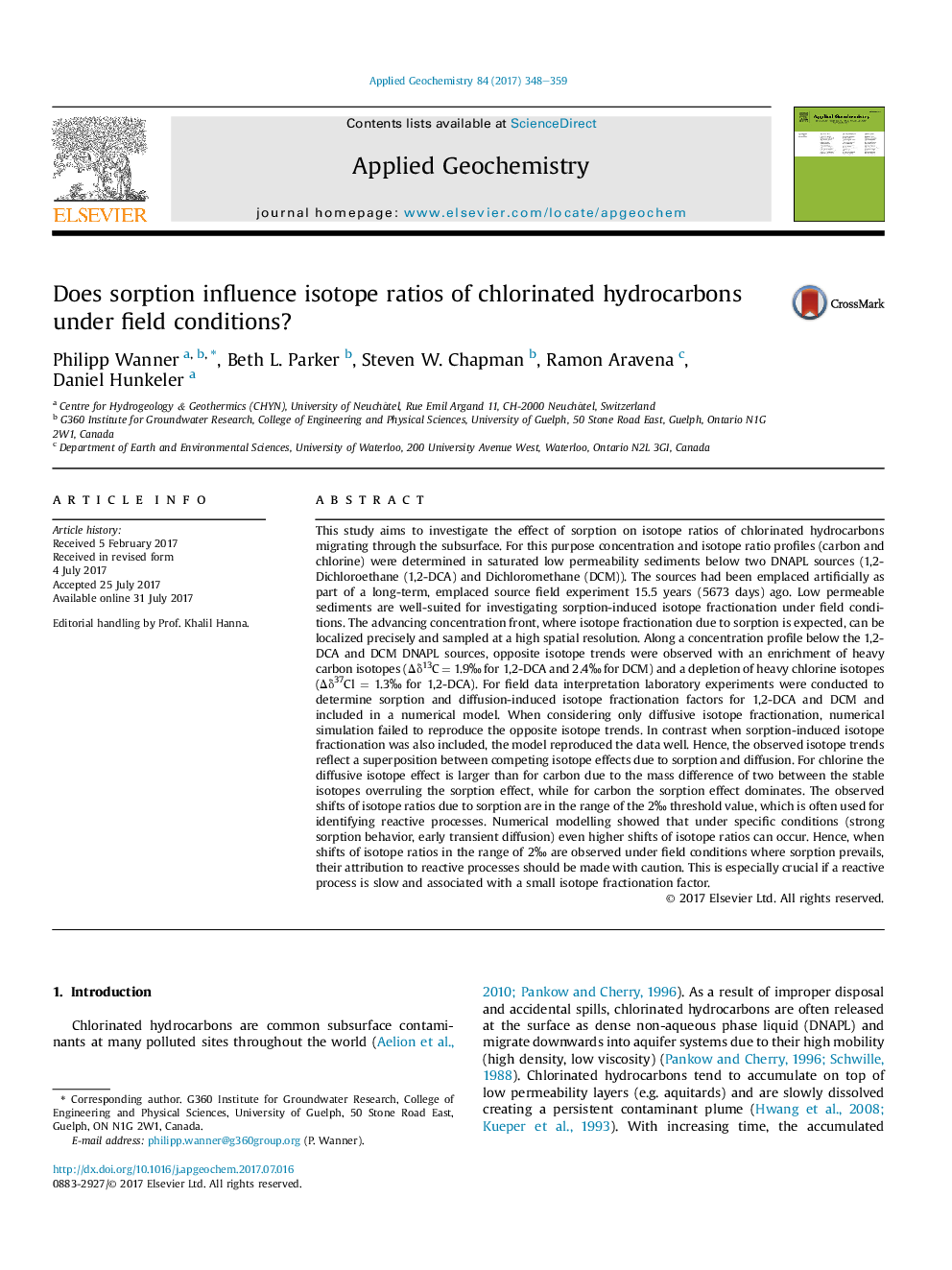| Article ID | Journal | Published Year | Pages | File Type |
|---|---|---|---|---|
| 5752536 | Applied Geochemistry | 2017 | 12 Pages |
â¢Fundamental insight into sorption-induced isotope fractionation at the field scale.â¢Implications of sorption-induced isotope fractionation for the application of stable isotope methods.â¢Application of dual isotope approach in low permeability sediments by using carbon and chlorine isotopes.â¢Controlled release field experiment in low permeability sediments over a time period of 15.5 years.
This study aims to investigate the effect of sorption on isotope ratios of chlorinated hydrocarbons migrating through the subsurface. For this purpose concentration and isotope ratio profiles (carbon and chlorine) were determined in saturated low permeability sediments below two DNAPL sources (1,2-Dichloroethane (1,2-DCA) and Dichloromethane (DCM)). The sources had been emplaced artificially as part of a long-term, emplaced source field experiment 15.5 years (5673 days) ago. Low permeable sediments are well-suited for investigating sorption-induced isotope fractionation under field conditions. The advancing concentration front, where isotope fractionation due to sorption is expected, can be localized precisely and sampled at a high spatial resolution. Along a concentration profile below the 1,2-DCA and DCM DNAPL sources, opposite isotope trends were observed with an enrichment of heavy carbon isotopes (Îδ13C = 1.9â° for 1,2-DCA and 2.4â° for DCM) and a depletion of heavy chlorine isotopes (Îδ37Cl = 1.3â° for 1,2-DCA). For field data interpretation laboratory experiments were conducted to determine sorption and diffusion-induced isotope fractionation factors for 1,2-DCA and DCM and included in a numerical model. When considering only diffusive isotope fractionation, numerical simulation failed to reproduce the opposite isotope trends. In contrast when sorption-induced isotope fractionation was also included, the model reproduced the data well. Hence, the observed isotope trends reflect a superposition between competing isotope effects due to sorption and diffusion. For chlorine the diffusive isotope effect is larger than for carbon due to the mass difference of two between the stable isotopes overruling the sorption effect, while for carbon the sorption effect dominates. The observed shifts of isotope ratios due to sorption are in the range of the 2â° threshold value, which is often used for identifying reactive processes. Numerical modelling showed that under specific conditions (strong sorption behavior, early transient diffusion) even higher shifts of isotope ratios can occur. Hence, when shifts of isotope ratios in the range of 2â° are observed under field conditions where sorption prevails, their attribution to reactive processes should be made with caution. This is especially crucial if a reactive process is slow and associated with a small isotope fractionation factor.
